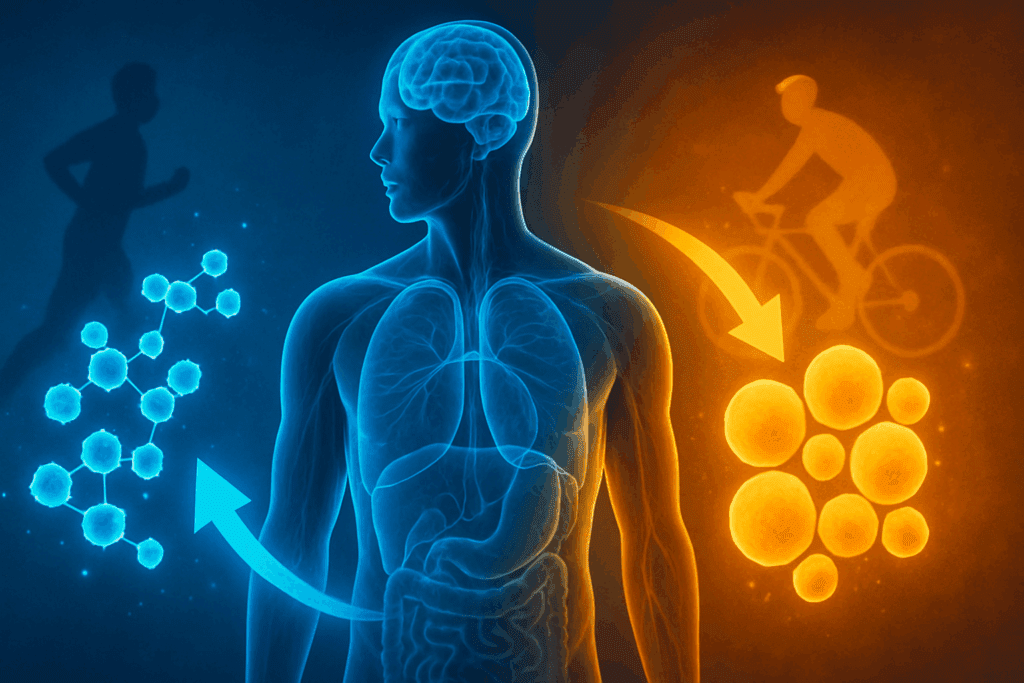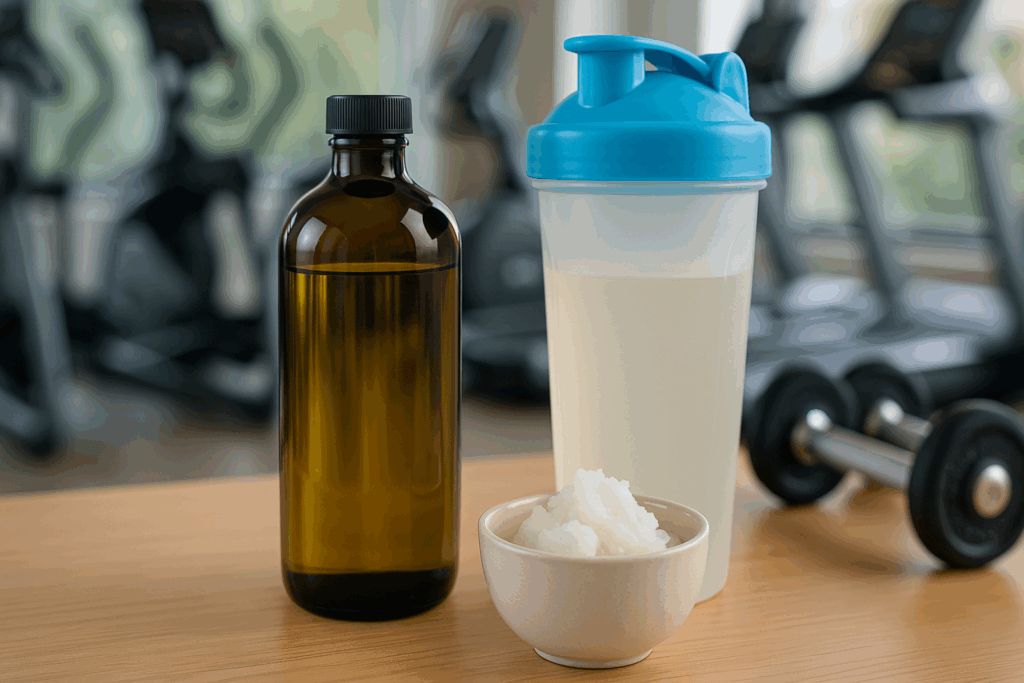The ketogenic diet, commonly referred to as the keto diet, has grown beyond its origins as a therapeutic intervention for epilepsy and become a mainstream nutritional strategy for weight loss and metabolic health. Yet one area that continues to generate curiosity and concern is how to effectively combine keto and working out. While the ketogenic lifestyle prioritizes high-fat, low-carbohydrate intake to encourage the body into a state of nutritional ketosis, exercise remains a vital component of physical well-being. The interplay between keto diet and workout regimens can be complex, particularly when it comes to fueling, performance, and recovery. Understanding how to fuel your workout on a keto diet is essential not only for optimizing results but also for protecting health and sustaining long-term fitness goals. This article explores expert-backed strategies for exercising safely while on a ketogenic diet, providing actionable insights grounded in science and clinical experience.
You may also like: Is the Keto Diet Safe or Dangerous? What Experts Say About the Risks, Benefits, and Basics of the Ketogenic Diet

Adapting to Keto: What Happens to Your Body During Exercise on a Ketogenic Diet
When an individual transitions to a ketogenic diet, their metabolism undergoes a profound shift. Normally, carbohydrates are the body’s preferred energy source, broken down into glucose and stored as glycogen in muscles and the liver. During exercise, especially high-intensity activity, these glycogen stores are typically the first to be tapped. However, in ketosis, carbohydrate intake is drastically reduced, and the body learns to rely on fat and ketone bodies as its primary fuel sources. For those exploring keto exercise strategies, this metabolic adaptation is central.
The transition to fat-adaptation usually takes several weeks, during which some individuals experience temporary declines in performance, often referred to as the “keto flu.” This is not an illness but a collection of symptoms that include fatigue, brain fog, and decreased endurance, particularly during aerobic or anaerobic workouts. These symptoms highlight the importance of patience and strategic nutritional planning. As the body adjusts, it becomes more efficient at oxidizing fatty acids and utilizing ketones, allowing for sustained energy during steady-state cardio or low- to moderate-intensity strength training. However, workouts that demand quick bursts of energy, such as sprinting or heavy lifting, may still be limited by reduced glycogen availability.

Understanding Keto and Working Out: Matching Fitness Goals with Fueling Strategies
Different types of exercise demand different types of fuel. This becomes especially important on a ketogenic diet, where traditional carb-loading strategies are no longer viable. For endurance athletes, the keto diet and fitness approach can work synergistically. Fat-adapted athletes often report increased stamina and a reduced need for frequent refueling, making it easier to maintain a steady pace over long durations. This is particularly useful in ultra-endurance events, where the body’s fat stores become a nearly limitless energy supply.
On the other hand, individuals pursuing high-intensity interval training (HIIT), powerlifting, or bodybuilding may need to adopt specialized adaptations to support performance. For example, targeted ketogenic dieting (TKD) and cyclical ketogenic dieting (CKD) are two evidence-supported variations. TKD allows for a small intake of fast-digesting carbs just before a workout, supplying glucose for glycolytic activity without kicking the body out of ketosis for long. CKD involves periodically reintroducing higher carb days, usually timed around the most intense workout sessions. Both strategies allow fitness enthusiasts to benefit from keto’s metabolic advantages while supporting more demanding training styles.

Hydration and Electrolyte Balance: The Overlooked Key to Keto Exercise Success
One of the most common mistakes people make when integrating keto and working out is neglecting hydration and electrolyte management. On a ketogenic diet, insulin levels drop, which leads to a reduction in sodium and water retention by the kidneys. This diuretic effect, while beneficial for bloating and water weight loss, increases the risk of dehydration and electrolyte imbalances.
During physical activity, fluid and electrolyte loss accelerates through sweat. If not replaced, this can lead to cramping, dizziness, and early fatigue. Sodium, potassium, and magnesium are especially crucial for muscle function and nerve transmission. For optimal performance and safety, it’s important to consciously replenish these electrolytes. Many experts recommend consuming bone broth, electrolyte supplements, or mineral-rich foods like avocados, leafy greens, and seeds. Athletes following a keto diet and fitness regimen should be especially vigilant before, during, and after exercise to ensure adequate intake of both water and electrolytes.
Protein Intake and Muscle Maintenance: Balancing Keto Principles with Fitness Demands
A frequent misconception about the ketogenic diet is that it is inherently low in protein. In truth, keto is moderate in protein, typically comprising 20% to 25% of total calories. This balance is crucial, particularly for those focused on muscle preservation or hypertrophy. Engaging in regular resistance training while following a keto diet and workout routine necessitates thoughtful attention to protein quality and quantity.
High-quality protein sources such as eggs, salmon, grass-fed beef, and collagen-rich bone broth can help support muscle protein synthesis and recovery. Research indicates that resistance-trained individuals on keto can maintain and even build muscle mass if their protein intake is sufficient and energy demands are met. Timing protein intake around workouts may also enhance recovery. While keto does not rely on carbohydrate-driven insulin spikes to drive nutrients into muscles, the body still responds favorably to post-exercise protein for repair and growth. For those performing workout keto routines, protein remains a foundational nutrient that should not be overlooked.

Ketone Bodies and Exercise Performance: Myth or Mechanism?
One of the more fascinating developments in the study of exercise on ketogenic diet patterns is the role of ketone bodies as an alternative fuel. Ketones, primarily beta-hydroxybutyrate (BHB), are produced in the liver during fatty acid oxidation and serve as an efficient energy source for both the brain and muscles. Unlike glucose, ketones generate more ATP per molecule and produce fewer reactive oxygen species, which theoretically offers metabolic advantages during endurance training.
Some studies have examined the potential benefits of exogenous ketone supplements in boosting workout performance, especially for endurance athletes. While the data is still emerging, preliminary findings suggest that ketone esters may provide a dual-fuel advantage by supplementing both fat and ketone availability, potentially sparing muscle glycogen and reducing lactate buildup. However, these supplements are not a replacement for proper diet and training. They may offer marginal gains, particularly for those already fat-adapted, but they are most effective when used in conjunction with a well-formulated ketogenic diet and workout strategy.
Timing Your Meals: When and What to Eat for Maximum Results
Meal timing on a keto diet becomes even more crucial when incorporating regular exercise. Unlike carb-based diets that often emphasize pre-workout carbohydrate intake for quick energy, keto-adapted athletes must consider different fueling strategies. For many individuals, training in a fasted state may enhance fat oxidation and metabolic flexibility, especially for low- to moderate-intensity workouts. However, those engaging in high-intensity or strength-based workouts may benefit from consuming a small, protein- and fat-rich meal one to two hours before training.
Post-workout nutrition remains essential for muscle recovery, hormonal regulation, and replenishment of nutrients. A balanced post-workout meal should include a high-quality protein source and a moderate amount of healthy fats. While carbohydrates are limited, they are not entirely forbidden in all cases. In fact, some keto practitioners include small amounts of carb-dense vegetables or berries post-exercise, especially if they follow a targeted ketogenic diet. Ultimately, how to fuel workout on a keto diet depends on training intensity, goals, and individual response. Keeping a food and training journal can help identify what combinations yield the best results.

The Role of MCTs and Fat-Based Fuels in Workout Keto Routines
Medium-chain triglycerides (MCTs), particularly those derived from coconut oil, have become popular among those interested in keto exercise due to their rapid absorption and conversion into ketones. Unlike long-chain fats, MCTs bypass normal digestion and are quickly transported to the liver for ketogenesis, making them a fast-acting energy source for workout sessions. This is especially beneficial for early-morning or fasted workouts when glycogen stores are low.
Incorporating MCT oil or MCT powder into a pre-workout smoothie or coffee can provide a quick boost in mental clarity and physical endurance. Athletes following a ketogenic diet and fitness regimen often report improved stamina and reduced “hitting the wall” during extended cardio sessions. However, as with any supplement, individual tolerance varies. It is advisable to start with small doses and assess personal response, as large amounts of MCT oil can cause gastrointestinal discomfort in some individuals. Used strategically, MCTs can be a valuable tool in the workout keto toolbox.
Individual Variability: Customizing Keto and Exercise for Your Physiology
Not everyone will respond to keto and working out in the same way. Genetic differences, fitness levels, health status, and hormonal profiles all influence how the body metabolizes nutrients and adapts to training. For example, some people thrive on keto with minimal carbohydrate intake, while others may experience improved performance and recovery with a slightly more liberal approach. Understanding these variations is crucial when designing a sustainable ketogenic diet and workout program.
Tracking performance markers such as energy levels, strength gains, body composition, and recovery time can help guide adjustments in macronutrient ratios and training intensity. Blood ketone testing, glucose monitoring, and even wearable fitness trackers offer valuable feedback. Additionally, working with a nutritionist or sports medicine specialist familiar with ketogenic protocols can help tailor recommendations based on personal goals and biomarkers. In the realm of exercise on ketogenic diet plans, personalization is not a luxury—it is a necessity for long-term success and safety.

Recovery and Sleep: The Forgotten Pillars of Keto Fitness Success
While much attention is given to what happens during a workout, the recovery phase is just as important—if not more so—when pursuing any fitness regimen, particularly one that integrates a keto lifestyle. Proper recovery includes not only muscle repair but also replenishment of lost nutrients, hormonal balance, and nervous system restoration. For those embracing keto exercise routines, recovery strategies should be deliberately planned to align with the body’s unique needs in a state of ketosis.
Sleep, often underestimated, plays a central role in muscle recovery, cognitive function, and metabolic regulation. Poor sleep can lead to increased cortisol levels, impaired glucose metabolism, and reduced athletic performance. On a ketogenic diet, some individuals may initially experience sleep disturbances as the body adapts to a new fuel source. Incorporating magnesium-rich foods, managing stress, and limiting screen exposure before bedtime can promote deeper sleep. Ensuring adequate sleep hygiene is one of the most effective ways to support a consistent workout keto lifestyle.
Frequently Asked Questions (FAQ): How to Fuel Your Workout on a Keto Diet
1. Can you build muscle effectively while following a keto diet and workout plan?
Yes, you can build muscle while adhering to a keto diet and workout routine, but it requires a different strategic approach compared to traditional high-carb bulking diets. The key lies in optimizing protein intake and ensuring you’re consuming enough total calories to support muscle growth. Many people mistakenly lower their protein too much on a ketogenic diet, which can limit hypertrophy. In the context of keto diet and workout strategies, incorporating targeted or cyclical keto approaches—where small amounts of carbs are consumed around training—can enhance performance and recovery. While muscle building might be slightly slower with keto and working out compared to carb-heavy regimens, it’s entirely possible with proper nutrition, sleep, and progressive resistance training.
2. Is intermittent fasting compatible with keto exercise routines, especially for morning workouts?
Intermittent fasting and keto exercise routines can complement each other well, especially when training sessions are timed strategically. Exercising in a fasted state while in ketosis can enhance fat oxidation and improve metabolic flexibility. However, those combining fasting with exercise on ketogenic diet principles must be mindful of fatigue and hydration. For morning workouts, consuming electrolytes and perhaps a small amount of medium-chain triglycerides (MCTs) can provide a quick energy source without breaking ketosis. Ultimately, how to fuel a workout on a keto diet while fasting depends on personal energy levels and the intensity of the session, but many find this pairing supports endurance and mental clarity when approached mindfully.
3. What are the best pre-workout snacks for those following a strict keto protocol?
When considering how to fuel your workout on a keto diet, the best pre-workout snacks focus on fats and moderate protein without compromising ketosis. Ideal choices include a small handful of macadamia nuts, hard-boiled eggs, or coffee blended with MCT oil and grass-fed butter (often referred to as “keto coffee”). These options provide sustained energy without the blood sugar crash associated with carb-based snacks. For keto and working out routines that involve weight training or high-intensity bursts, some individuals may benefit from a few grams of fast-digesting carbs like berries or a small piece of dark chocolate right before training, depending on how their body responds. Tailoring your keto diet and workout plan around your specific performance goals can help refine your ideal pre-training fuel strategy.
4. Can high-intensity workouts be maintained long-term on a ketogenic diet?
Maintaining high-intensity workouts on a keto diet and fitness plan is possible but may require adaptation time and strategic modifications. During the initial phase of adapting to a low-carb state, some people experience a dip in anaerobic performance due to glycogen depletion. However, once keto-adapted, many athletes report improved endurance and reduced recovery times. For those who regularly perform high-intensity interval training (HIIT), a “targeted ketogenic diet” (TKD) approach—where a small carb dose is consumed pre-workout—can help support peak performance without disrupting ketosis. While endurance activities are often well-suited to workout keto approaches, explosive activities may benefit from periodic carbohydrate reintroduction, especially during deload weeks or heavy lifting cycles.
5. How does sleep quality affect performance when following a keto exercise routine?
Sleep plays a critical role in both recovery and performance, especially when following a keto exercise plan. The metabolic transition to ketosis can initially affect sleep patterns due to changes in electrolytes and hormonal signaling. Inadequate sleep can lead to increased cortisol levels, reduced insulin sensitivity, and impaired muscle repair, all of which are detrimental to those pursuing a rigorous keto and working out schedule. To improve sleep quality, it’s essential to maintain electrolyte balance—particularly magnesium—and to avoid stimulating foods or caffeine too late in the day. Incorporating consistent sleep hygiene practices supports long-term performance and recovery, especially when your body is operating in a fat-adapted state and your workouts are demanding.
6. Are there risks associated with long-term keto diet and workout programs for athletes?
While many people thrive on a long-term keto diet and fitness regimen, athletes should monitor certain health markers to ensure sustainable success. One consideration is thyroid function, as some individuals may experience reduced T3 levels over time, potentially affecting energy and metabolism. Additionally, those who engage in high-volume training on a workout keto plan should be vigilant about adequate micronutrient intake, especially sodium, potassium, and magnesium, which are often lost more rapidly in ketosis. Digestive changes, mood shifts, or performance plateaus can also indicate that adjustments may be needed. Periodic lab work and consultations with a sports nutritionist or keto-experienced healthcare provider can help tailor a long-term strategy that aligns with both performance and overall health.
7. How can women tailor a keto diet and workout plan to support hormonal health?
Women following a keto diet and workout routine often need to take a more nuanced approach due to the interplay between low-carb diets and female hormones. For some women, prolonged carbohydrate restriction can lead to disruptions in menstrual cycles or adrenal stress if calorie intake is also low. Integrating higher carb days—especially around ovulation or during the luteal phase—can help support progesterone production and overall hormonal balance. Additionally, women should be cautious about combining high-intensity exercise on ketogenic diet routines with aggressive caloric deficits, as this can increase the risk of hormone imbalances. Listening to biofeedback and adjusting macros as needed ensures that a woman’s keto and working out plan supports not just fitness goals, but reproductive and metabolic health as well.
8. How can older adults benefit from a workout keto approach while avoiding muscle loss?
For older adults, combining keto diet and fitness practices can offer metabolic benefits, but preserving muscle mass becomes a top priority. As we age, the body becomes less efficient at synthesizing muscle protein, so adequate intake of high-quality protein—often slightly above general keto recommendations—is essential. Resistance training should be the cornerstone of any keto and working out plan for aging adults, as it helps mitigate sarcopenia and maintain functional independence. Supplementing with leucine-rich foods or branched-chain amino acids (BCAAs) may also enhance muscle protein synthesis without compromising ketosis. Additionally, ensuring that workouts include a mix of strength, balance, and flexibility training allows older adults to gain the most from a workout keto lifestyle while supporting longevity and vitality.
9. What are some innovative approaches to enhance performance on a keto exercise plan?
Several cutting-edge strategies are emerging to support enhanced performance during exercise on ketogenic diet protocols. One technique gaining popularity is exogenous ketone supplementation, which can provide an immediate source of ketones and help buffer fatigue during intense training. Another approach involves strategic “carb cycling” without abandoning the keto framework—allowing athletes to benefit from enhanced glycogen stores for key workouts while maintaining metabolic flexibility. Cold thermogenesis and sauna use are also being explored as tools to boost mitochondrial function and accelerate recovery in the context of keto diet and fitness regimens. Combining these strategies with biofeedback tracking tools like continuous glucose monitors (CGMs) or ketone meters can help fine-tune a keto and working out plan for peak individual performance.
10. How does mindset and motivation shift when adapting to a keto lifestyle for fitness?
Embracing a keto diet and workout lifestyle often requires a mental shift as much as a physical one. Unlike conventional high-carb fitness plans that emphasize immediate energy spikes, keto exercise performance rewards consistency and discipline during the adaptation phase. Once past the initial transition, many report greater mental clarity, stable moods, and reduced cravings, all of which can boost motivation and adherence. Setting performance-based goals rather than just aesthetic ones can be especially effective when following a workout keto plan, as it places focus on strength, endurance, and functionality. Social support, mindset coaching, and journaling can further reinforce the long-term commitment required to succeed with keto and working out, ultimately creating a more holistic and sustainable approach to health.
Putting It All Together: How to Fuel Workout on a Keto Diet for Sustainable, Safe Fitness
Mastering the balance between keto diet and workout performance involves far more than just macronutrient ratios. It requires a nuanced understanding of physiology, nutrition, timing, and recovery. Those who wish to optimize their exercise on ketogenic diet strategies must remain attentive to their body’s signals, adapt training approaches as needed, and remain open to testing various fueling protocols. While some may perform best in a fasted state, others might require targeted carbohydrate intake to reach peak performance. Similarly, hydration, electrolyte management, and high-quality protein remain foundational pillars that cannot be ignored.
For those serious about integrating keto diet and fitness goals, patience and personalization are key. As research continues to expand our understanding of ketones, fat metabolism, and human performance, so too does the potential to refine and evolve how we train, eat, and recover. With the right strategies in place, the keto lifestyle can empower not only weight management and metabolic health but also support strength, endurance, and overall vitality for years to come.
Ultimately, the question of how to fuel workout on a keto diet is not a one-size-fits-all proposition. It is a dynamic, ongoing process that must take into account the complex interplay of biology, lifestyle, and athletic ambition. When approached with care, expertise, and intention, the ketogenic diet offers a powerful framework for achieving lasting fitness results through sustainable, science-backed practices that align both with physiology and personal goals.
Further Reading:
How to Safely and Effectively Come Off the Keto Diet
Is Exercise Harder on the Keto Diet?
Exercise on Keto: Here’s What to Know


